from Pubnico’s Historic Acadian Village/Le Village Historique Acadien de la Pubnico
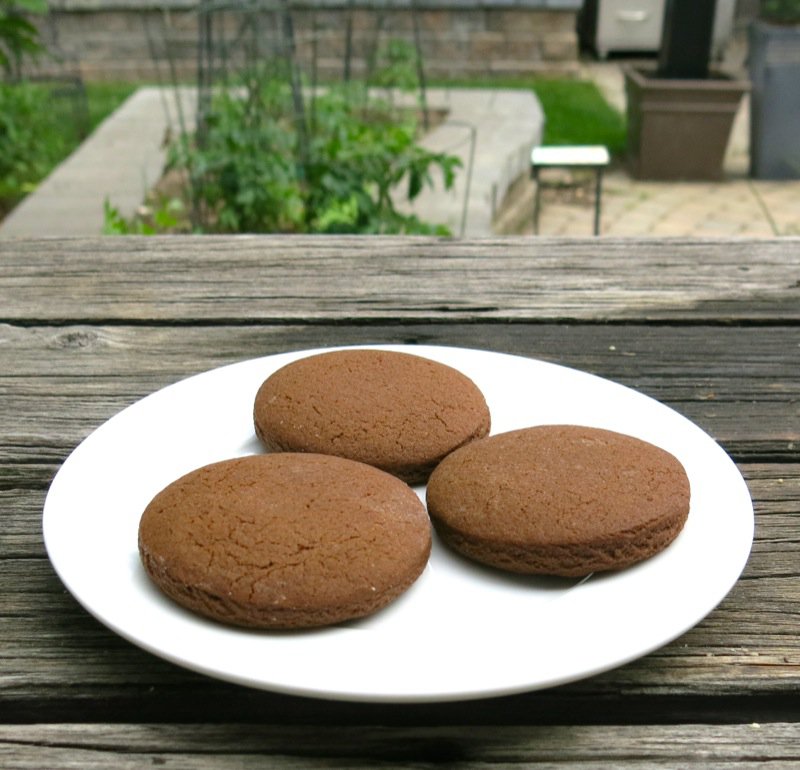
The village of Pubnico on the Southern tip of Nova Scotia is a close knit community with a shared history of valiance and hard work. Founded almost 400 years ago, in 1653, by Philippe Muis-d’Entremont, his descendents still populate his village. Originally of French descent and Roman Catholic faith, they developed a close relationship with the Mi’kmaq people in the area and their lives intermingled. “Oh, there is most likely a little Mi’kmaq blood in each of us!” joked Réal d’Entremont. The Mi’kmaq adopted Catholicism, there was intermarriage between the cultures, and these people developed a unique self-reliant identity quite separate from their French and British counterparts which made sense as they were physically isolated from them, as well. They came to know themselves as Acadians. Pubnico is one of three areas in Atlantic Canada where the Acadians relocated after the Great Deportation in 1755, thus the history of this community is one of the oldest in Canada. Today, the identity of the Acadian people of Pubnico is strongly rooted in honouring their past as they know stories of each ancestor for generations. Thus, a visit to Pubnico’s Historic Acadian Village/Le Village Historique Acadien de la Pubnico will take you back in time and enable you to envision that history as it is re-enacted before your eyes.
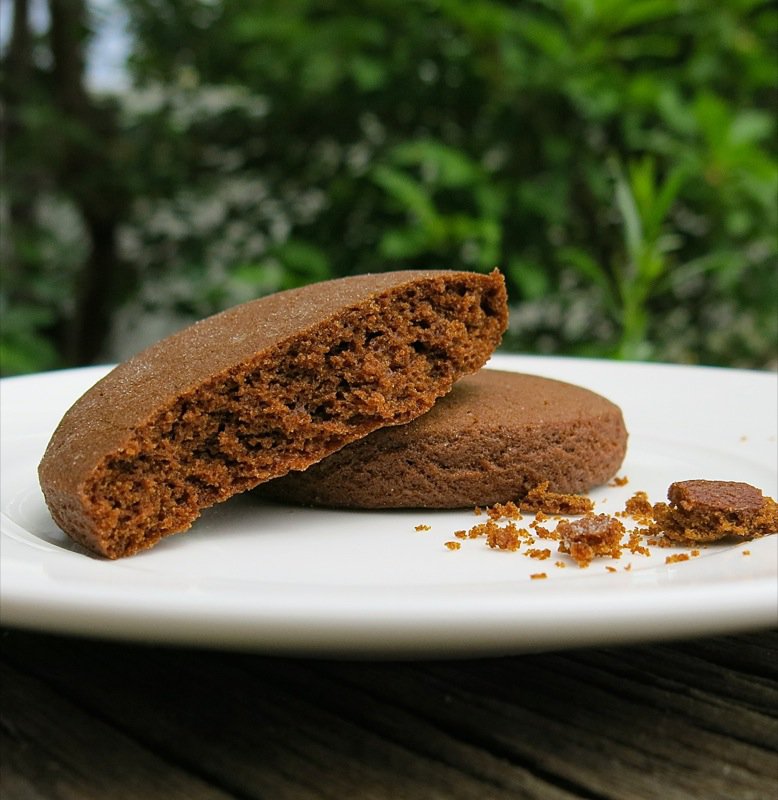
And, when you go there, there will be the scent of the fresh salt water from the sea mingled with the breeze coupled with the warm, spicy, hot from the oven Famous Pubnico Molasses Cookie. Edith d’Entremont is known to be the grandmother who first baked this recipe and it is prepared daily at the Historic Village and shared with visitors around the globe. Most villagers have this recipe and make it in their own home.
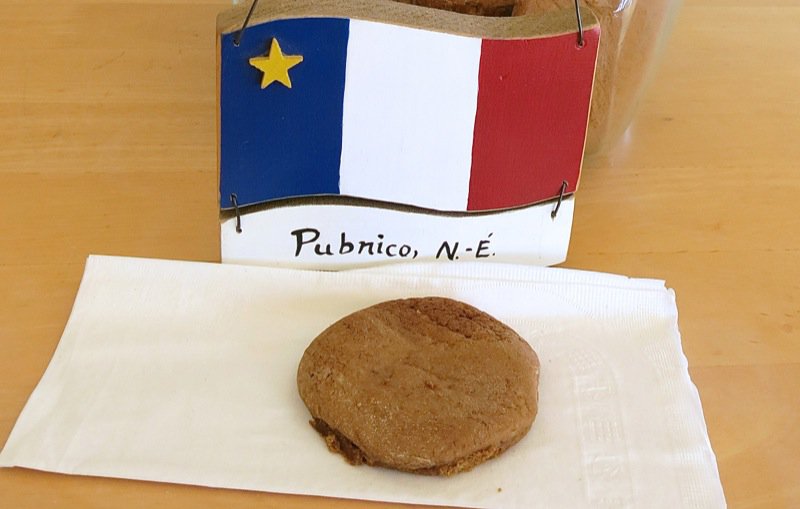
This particular Pubnico Molasses Cookie is most definitely a Taste of Pubnico. Bernice d’Entremont took me to the Village immediately after viewing d’Eons Rappie Pie Making. We met Roger d’Entremont, the Manager of the Village, who we visited with at the end of the pre-season tour. But, first, I make the cookies that I will forever remember as The Famous Pubnico Molasses Cookie. Then, I will share my tour of the village with you.
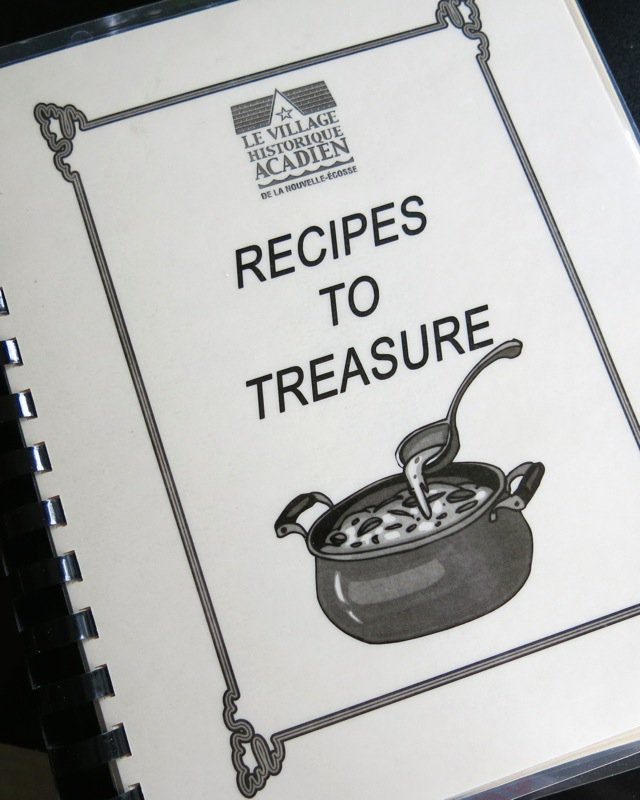
Edith d’Entremont’s recipe for these cookies is on page 65 of this cookbook, available for sale at The Historic Acadian Village bookstore and souvenir shop.
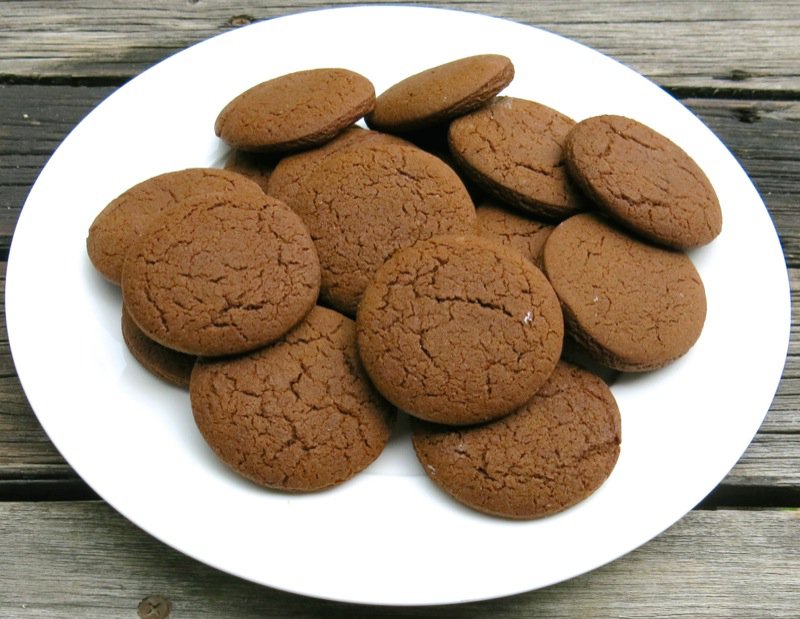
Theirs did not have crinkles on top. These were baked a minute longer, and developed crinkles. The Famous Pubnico Molasses Cookie is soft and smooth on top. But, now I know that a little more time in the oven changes the crust on the cookie. I like them better the original way.
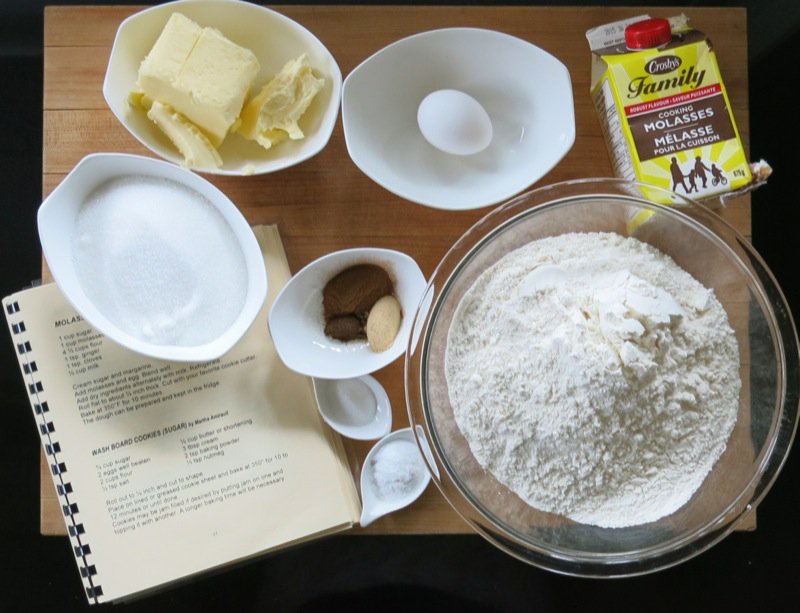
Mis en place. Lots of molasses in this recipe, and as I compared mine to the one I ate at the village, I would guess that they used Fancy Molasses in their recipe. I did not.
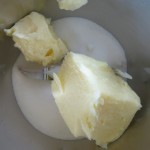
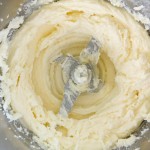
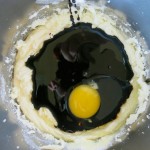
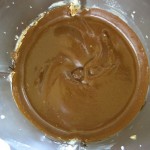
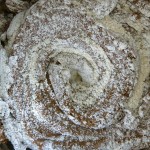
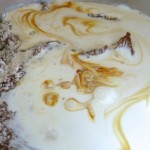
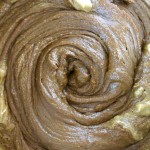
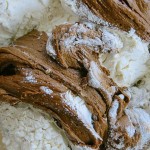
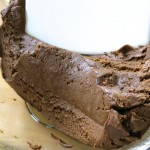
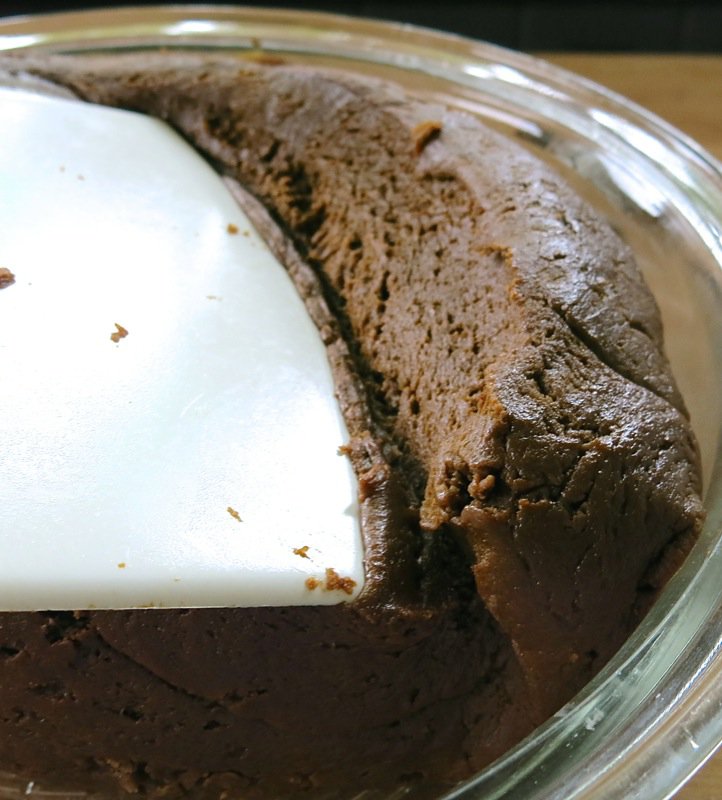
Preparing the dough is very straight forward. The process is the same as any cookie recipe.
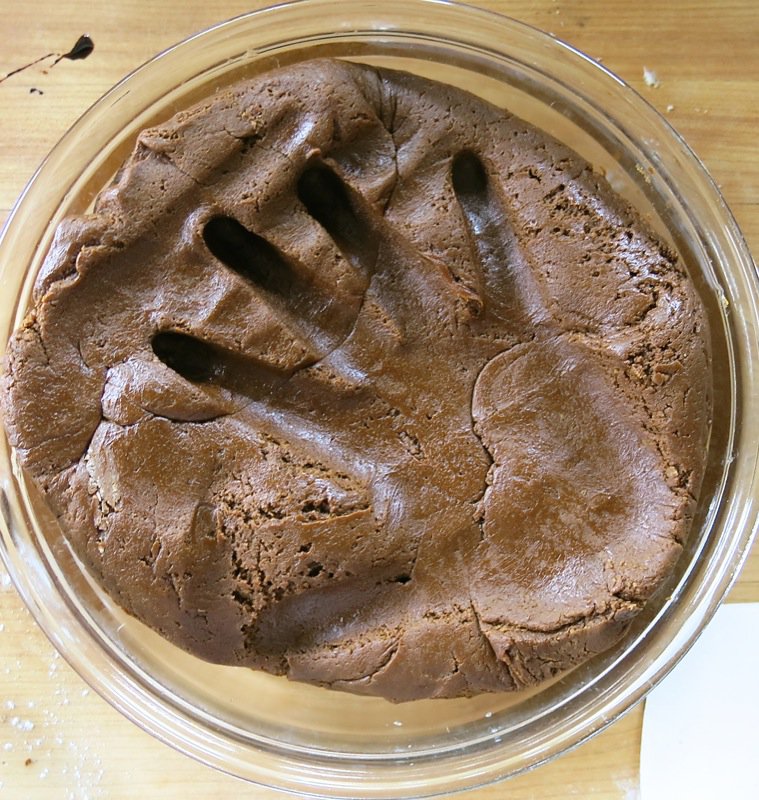
Handprint so you can see the density of the dough. Refrigerate overnight.
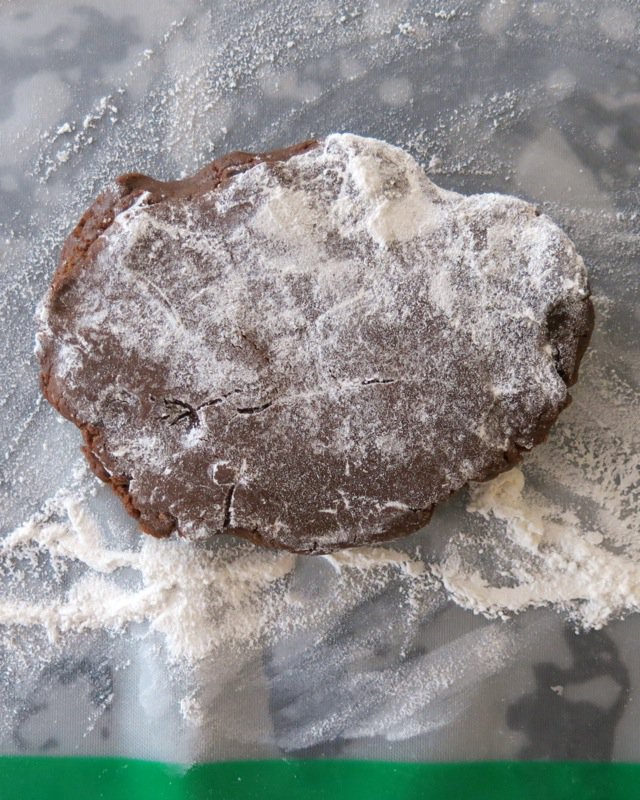
Take the dough out of the fridge and bring to room temperature to roll.
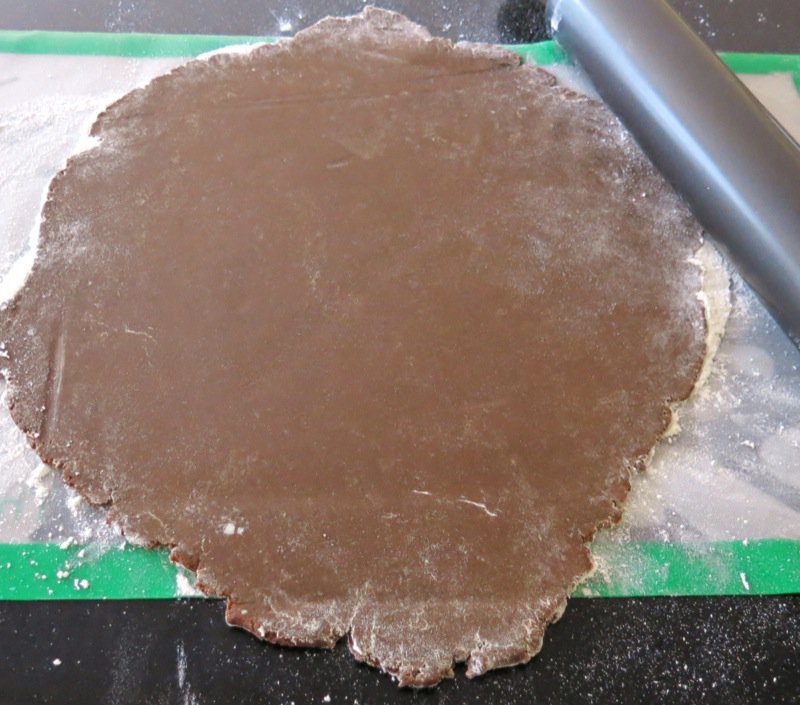
I thought the first batch was rolled thick enough to duplicate the tasting experience at the village. It was not. The cookies were tasty, but not soft enough.
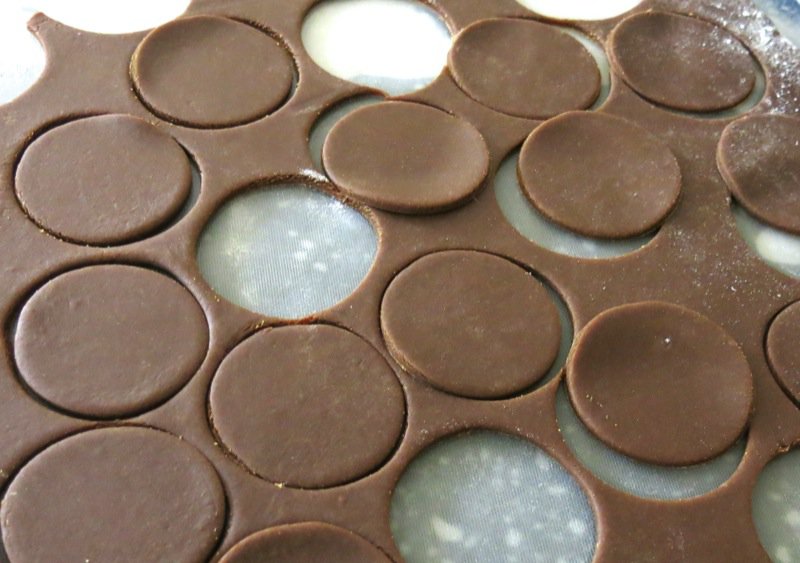
The texture is important. The Famous Pubnico Molasses Cookie is soft.
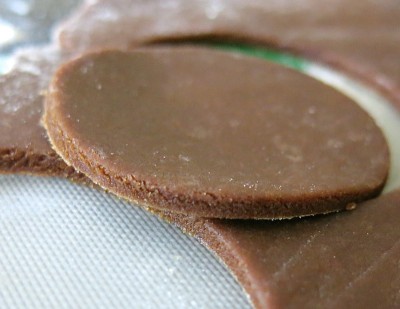
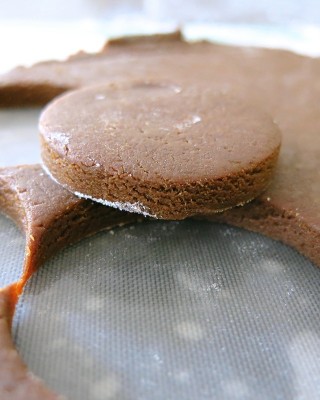
Above, you can see the difference in the thicknesses of the dough. To the left, my original roll; and the right is the thickness necessary to replicate this cookie and present it as it should be.
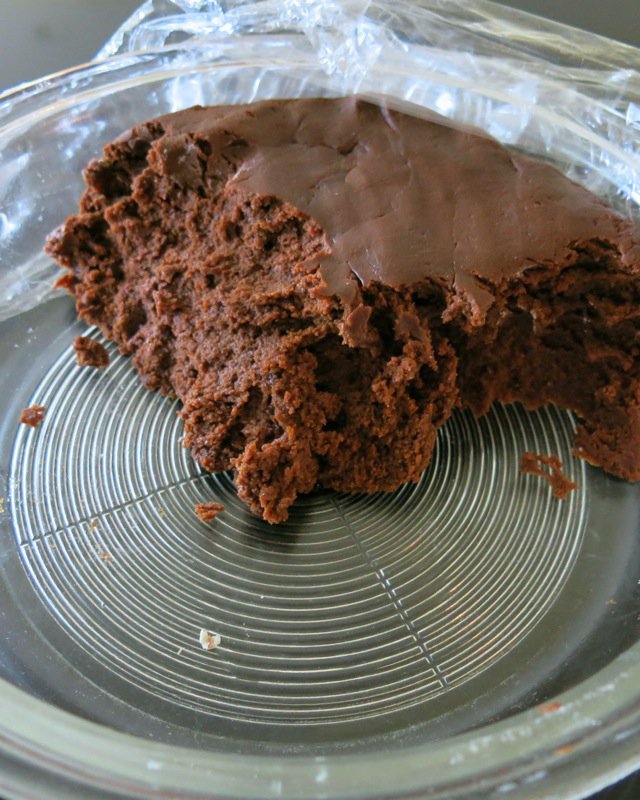
After refrigeration, the dough is gorgeous to work with. Molasses cookies are grandmother cookies, aren’t they? Whenever I bite into any molasses cookie, I instantly think of my own grandmother, and her favourite Molasses Gingerbread Cookie. As this cookie is a taste of Pubnico, my grandmother’s cookie is a taste of my childhood.
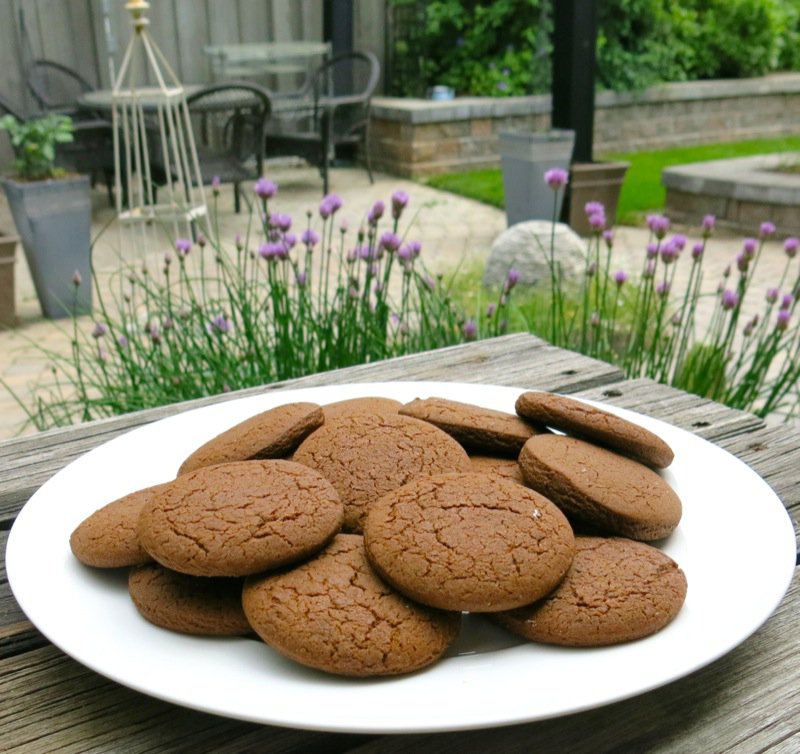
Home in Edmonton, the garden springing to life, it was gratifying to sit outside enjoying a Pubnico Molasses Cookie. One bite, and I was instantly back in the town and at Pubnico’s Historic Acadian Village/Le Village Historique Acadien de la Pubnico. This is a place the entire community has invested time and hard work to create. It is now owned by the province and employes a good sized staff in the summer that brings this history to life and enables visitors to participate in the traditional Acadian lifestyle and culture.
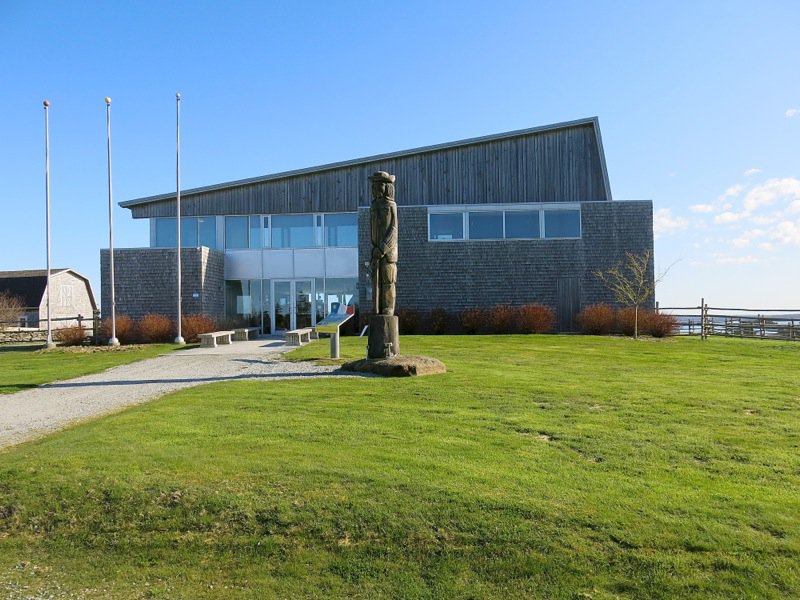
The statue in front of the entrance to the historic village is that of Philippe Mius-d’Entremont.
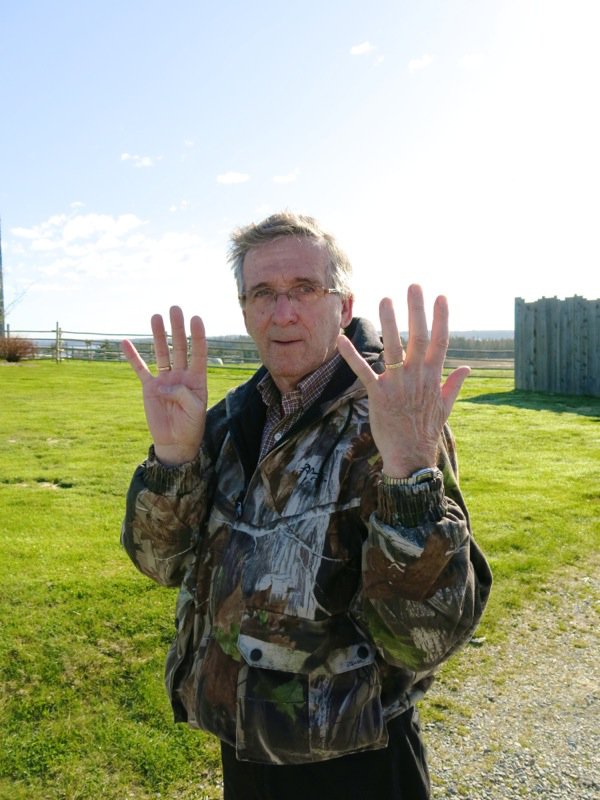
Philippe was Réal d’Entremont’s great great great great great great great grandfather. Yes. Seven generations back. Réal has a granddaughter, and Philippe goes back 9 generations for her. Réal instantaneously listed the names of each of his seven great grandparents. This community knows its roots.
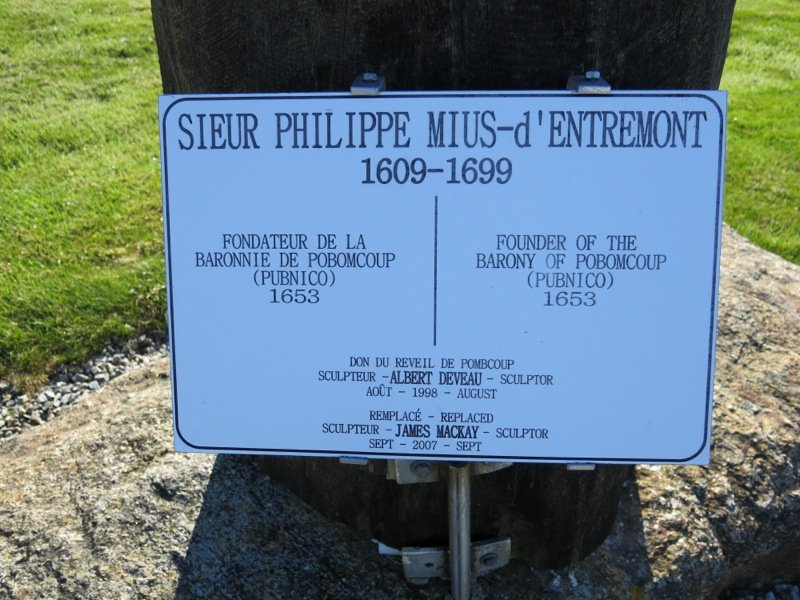
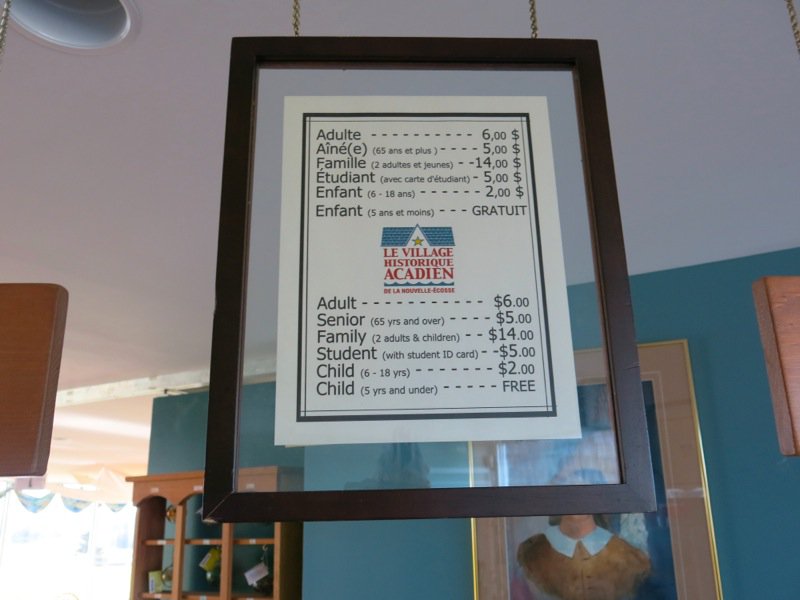
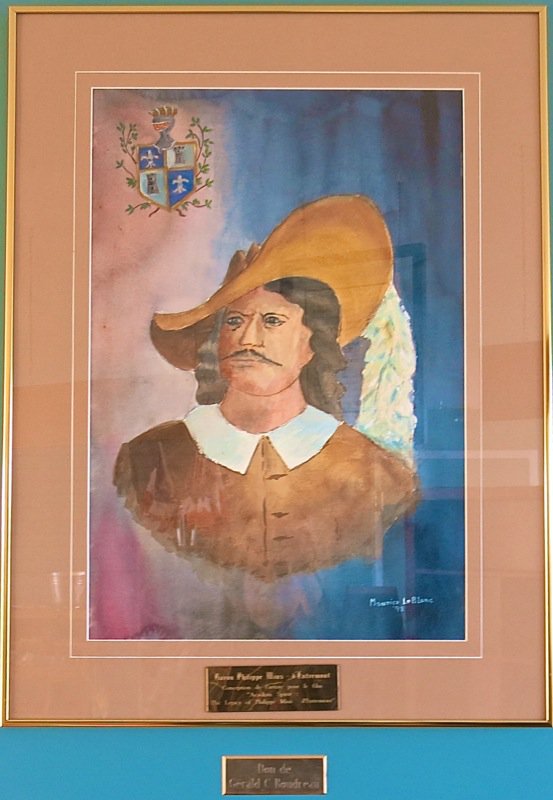
A painting of Philippe, above.
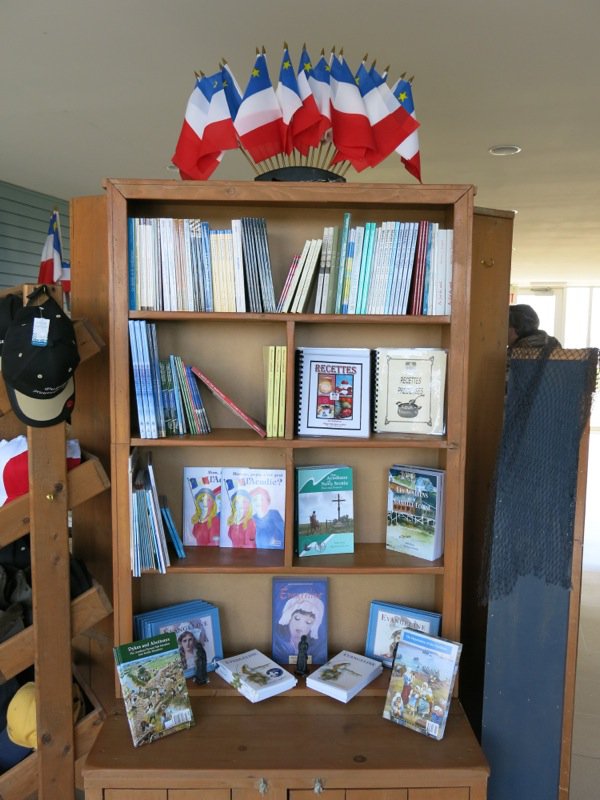
Who doesn’t love shopping? There are Acadian history books, recipe books, story books – everything and anything about this culture available here. I did need more time than I had to browse.
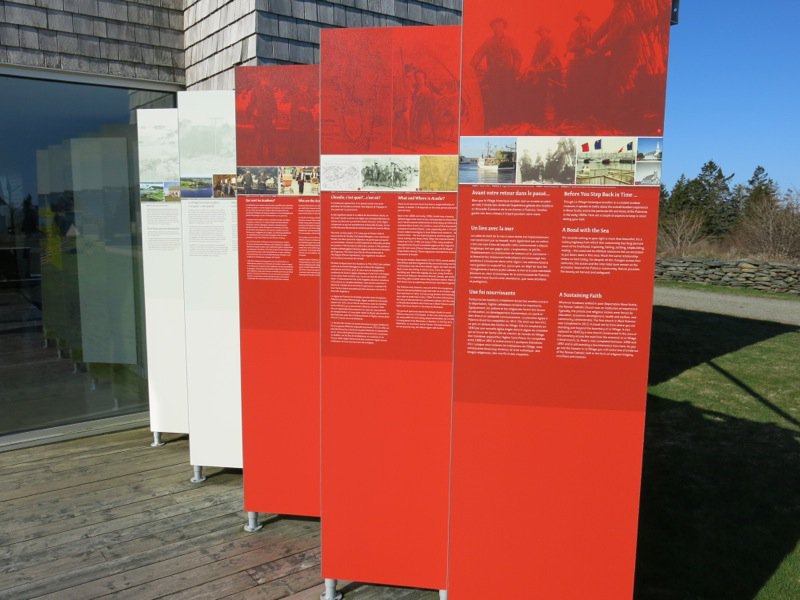
An excellent introduction to the village and the history and culture of the Acadian people of Pubnico is written here with photographs and maps. I photographed it to read later. The information is succinct and fascinating.
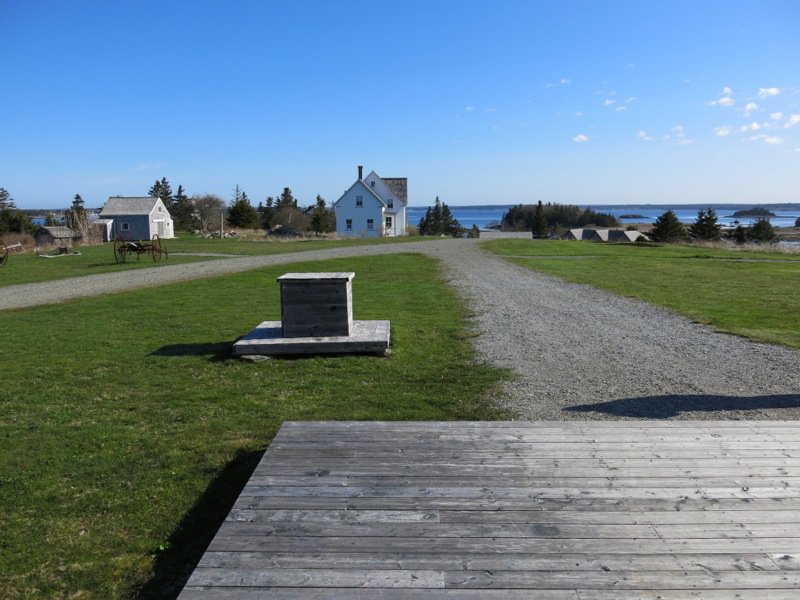
Today, (shoulder season) the village is not open. But, the beautiful blue sky was expansive and welcoming and it was easy to imagine this village a couple of hundred years back.
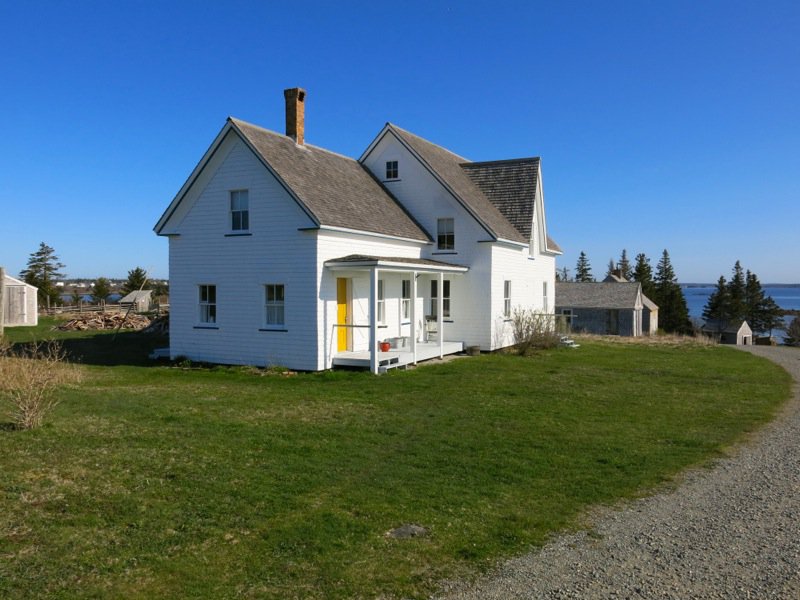
Réal’s mother was born in this house. All of the buildings have been moved from various parts of the community to recreate this village.
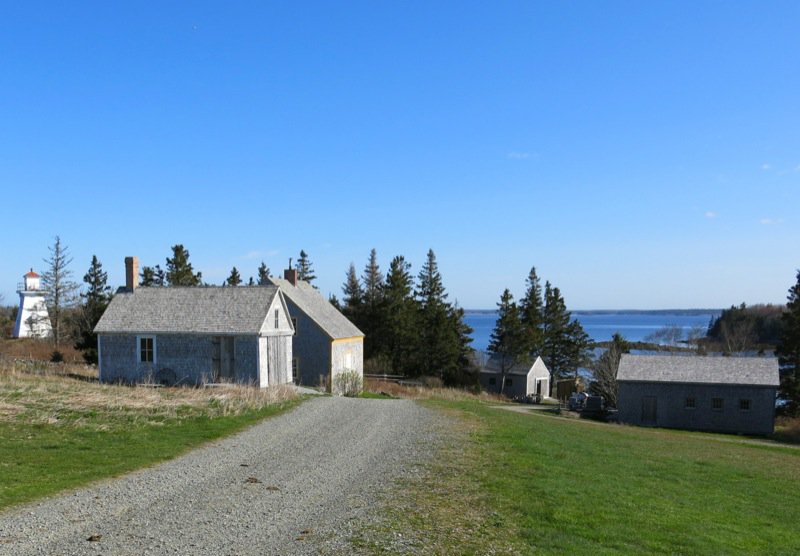
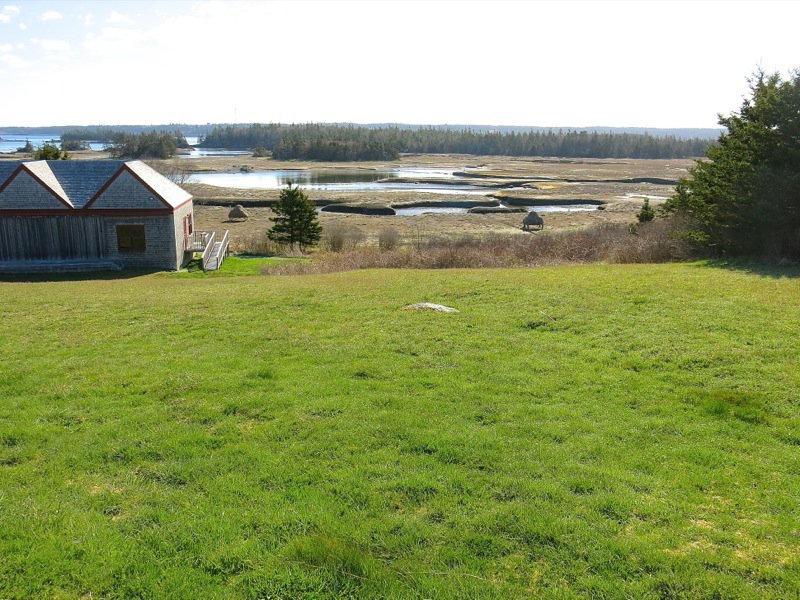
You can see how they used to stack the hay, or grasses, below.
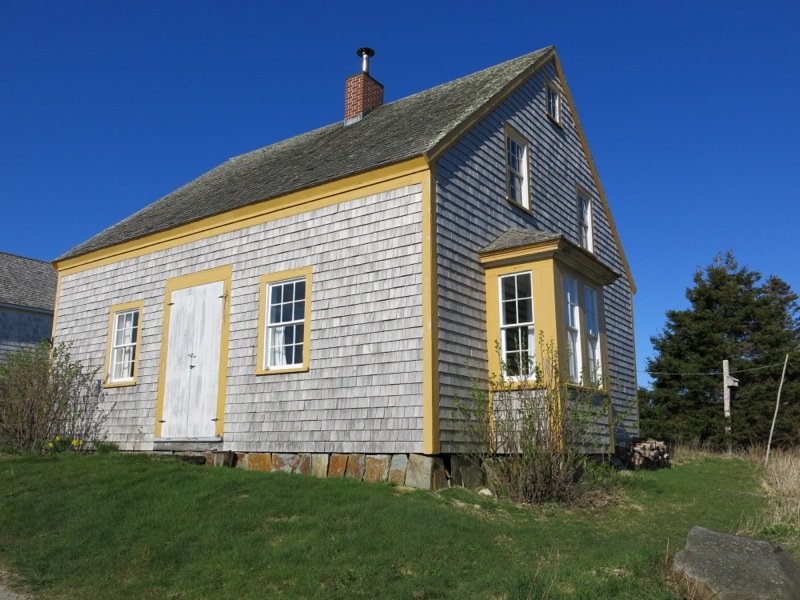
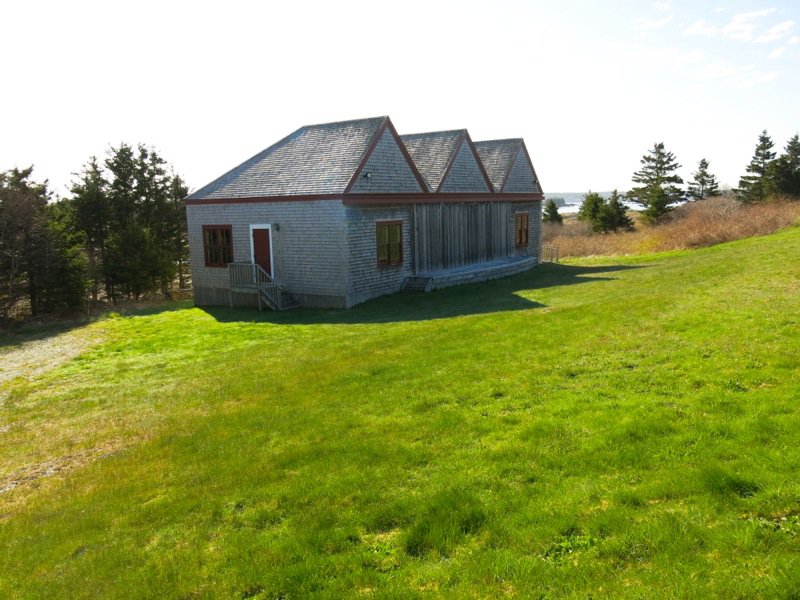
Open theatre is held here in the summer. The audience sits on the hill and the stage is in the building, below.
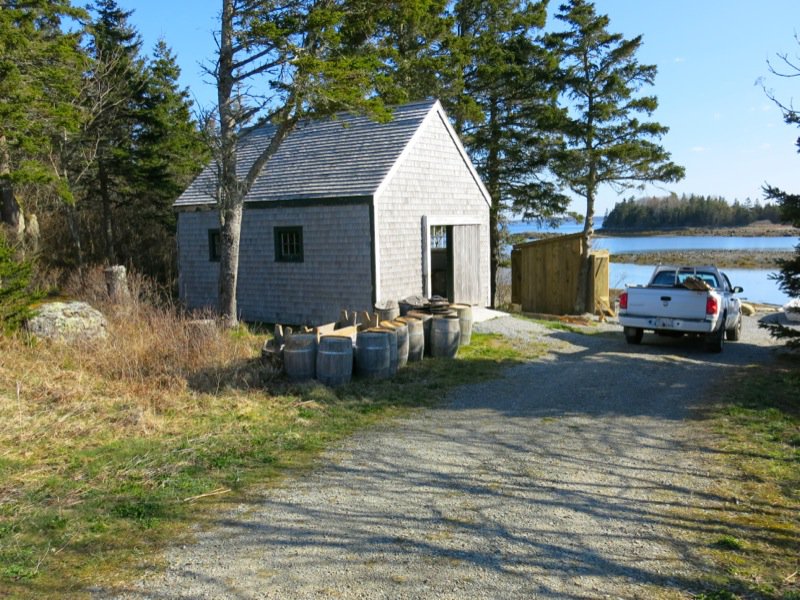
The modern vehicle jars the time period depicted back to present day. Yet, the peace and tranquility of this expanse of land cannot be underplayed. This is a gorgeous little piece of paradise and it is very easy to understand why people would have settled here and how they did live in the original time period.
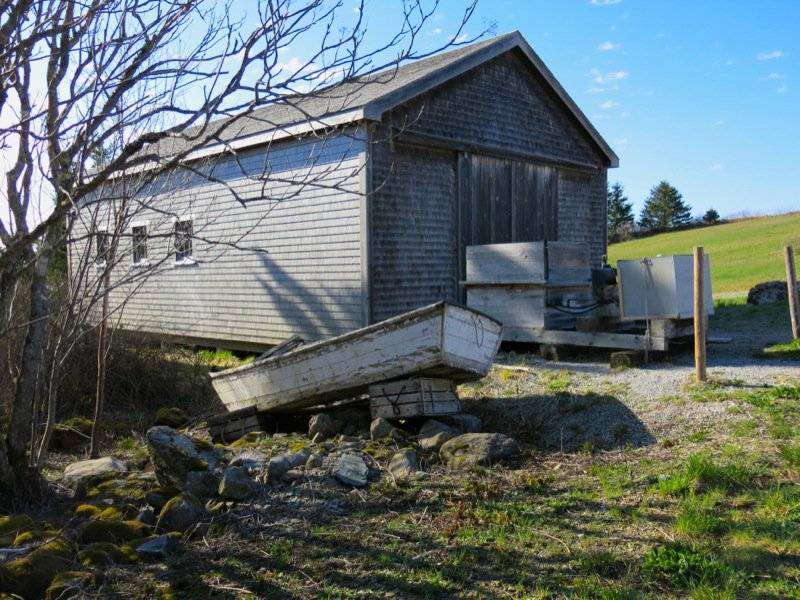
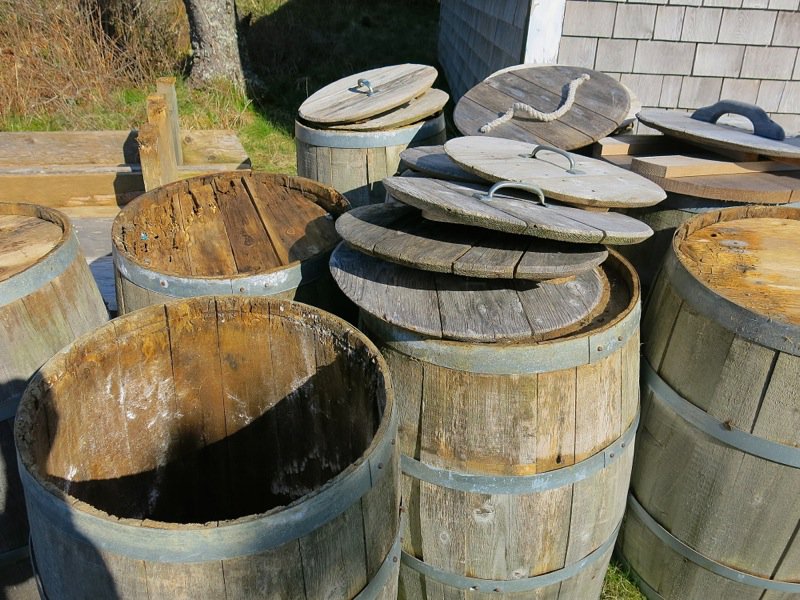
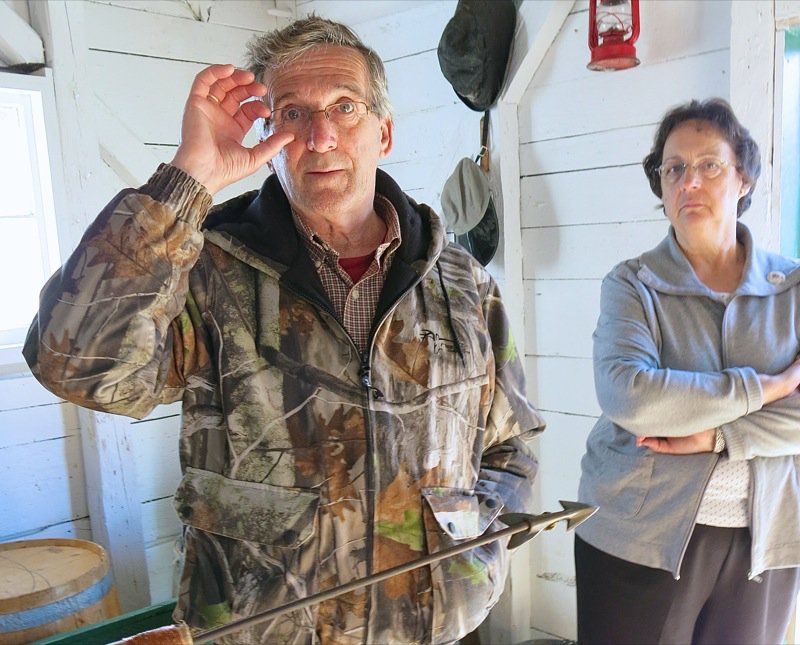
When the village is open, employees are dressed in period costumes going about the chores and crafts of the day. There are valuable artifacts on site to be shared with visitors. Réal immediately picked up this harpoon to show us as he has actually harpooned a huge fish before.
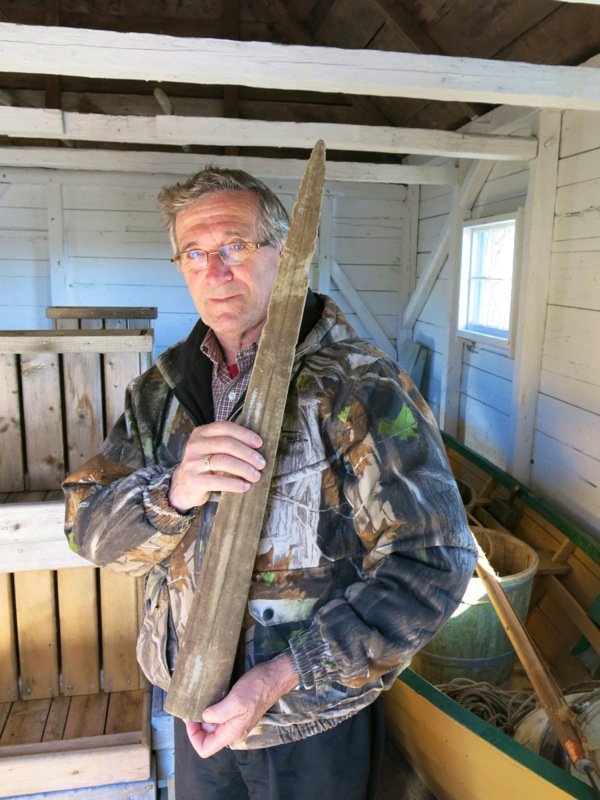
Any idea of what it is that he is holding, above?
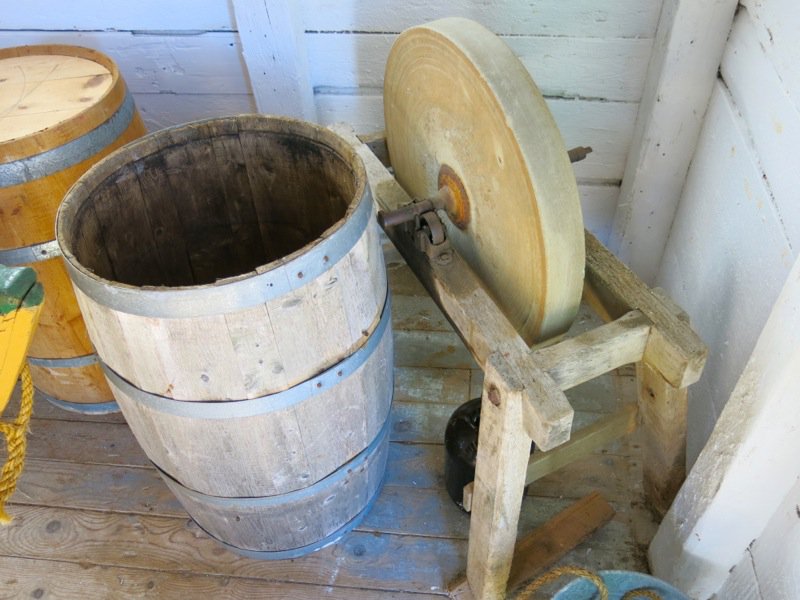
A grinder or sharpener that would be used during the summer.
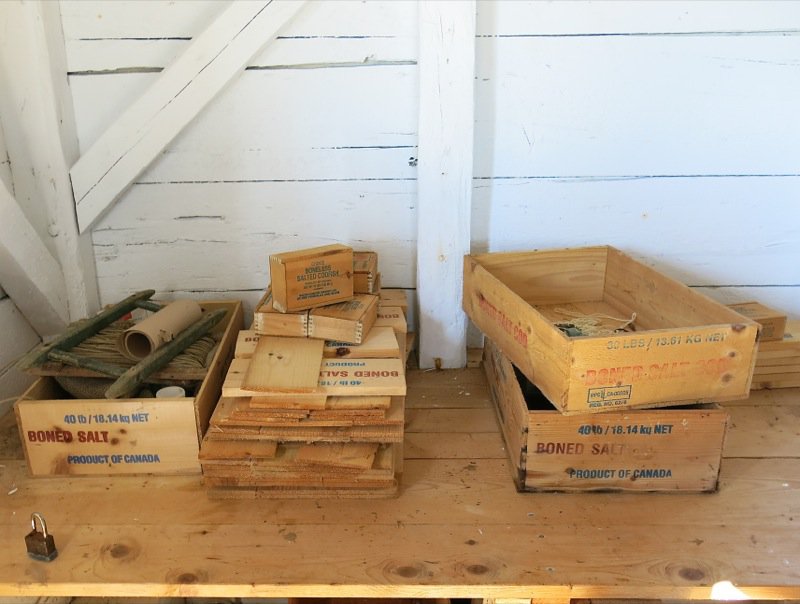
Salt cod and herring used to be packaged in wooden crates….
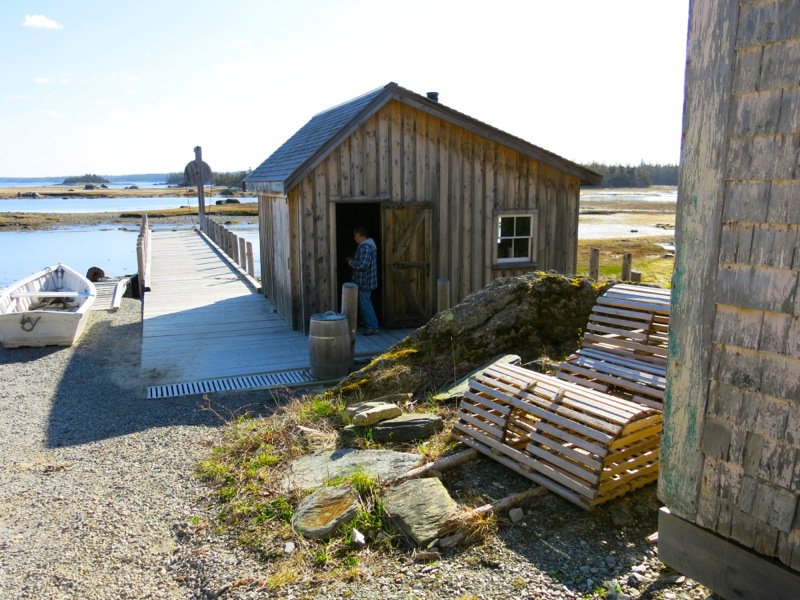
Guests can go out in a boat in the summer.
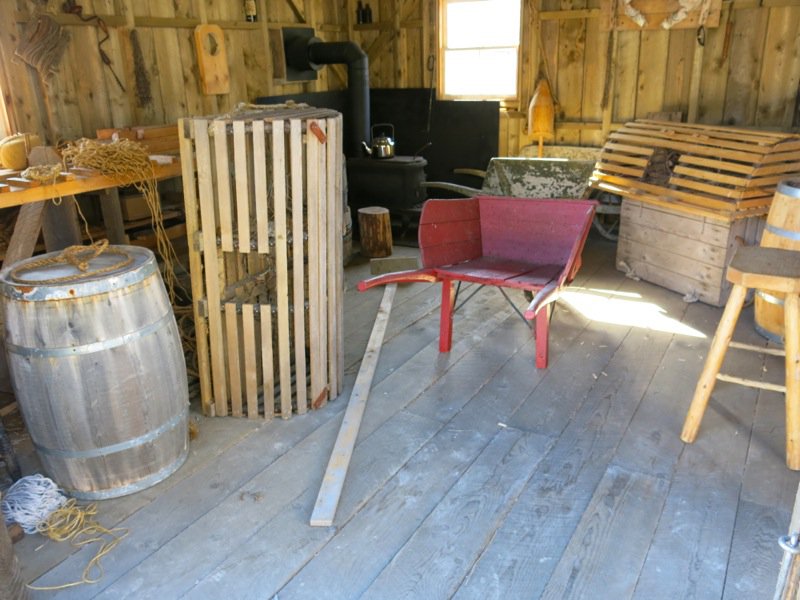
The life of the community has always revolved around fishing, and lobster fishing the last hundred years, or so. There will be people making nets, carving lobster pegs, teaching children and adults alike about the crafts and work of this people’s past.
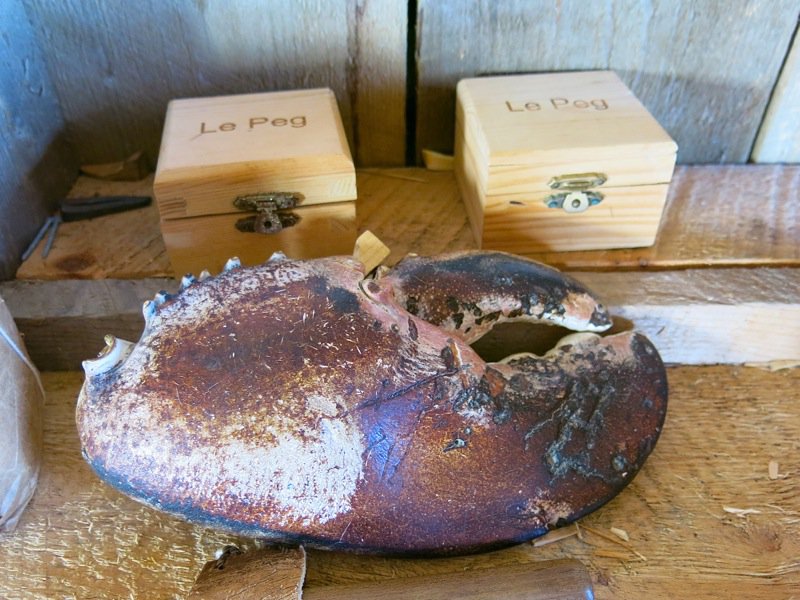
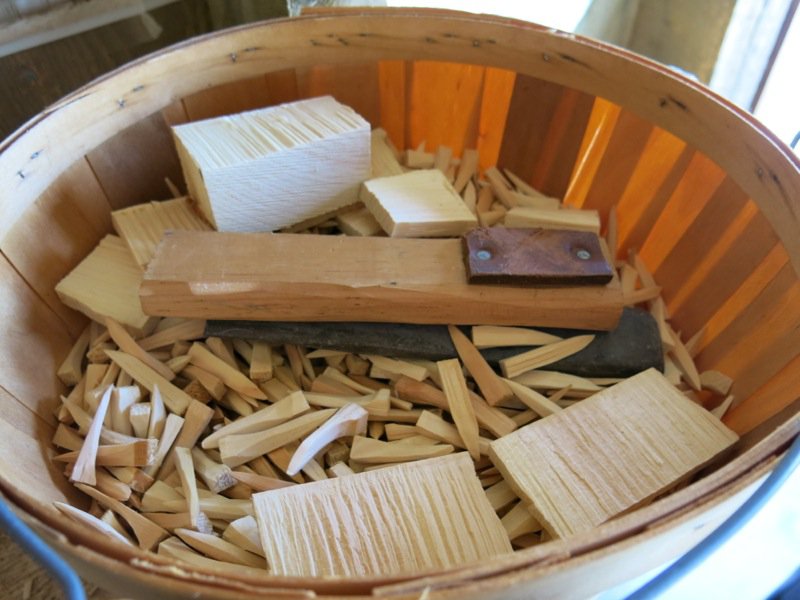
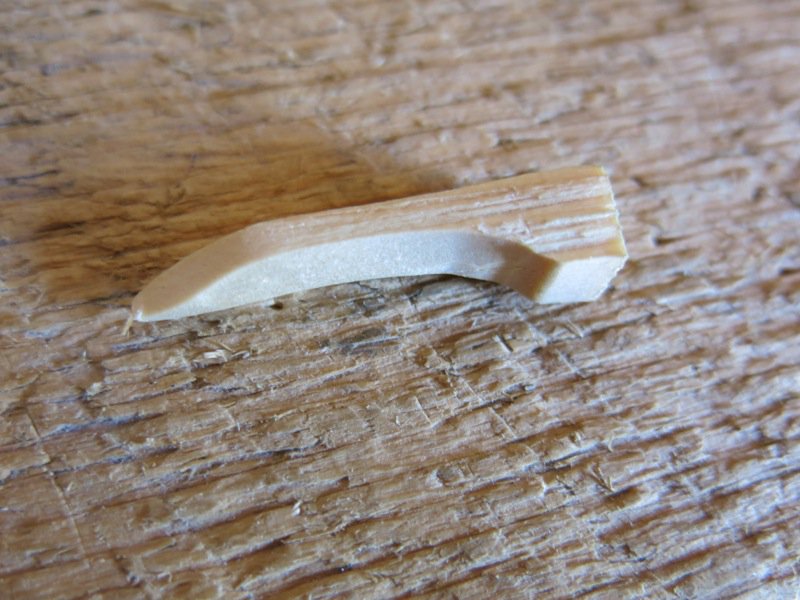
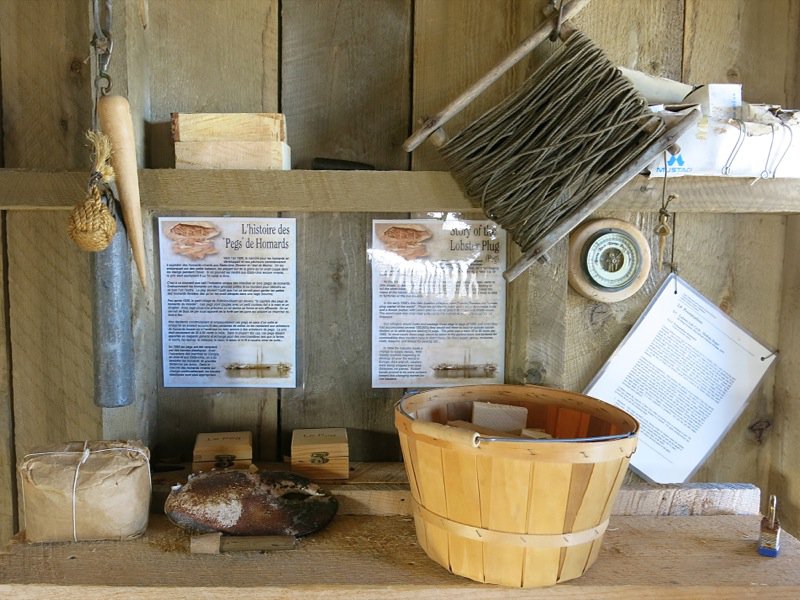
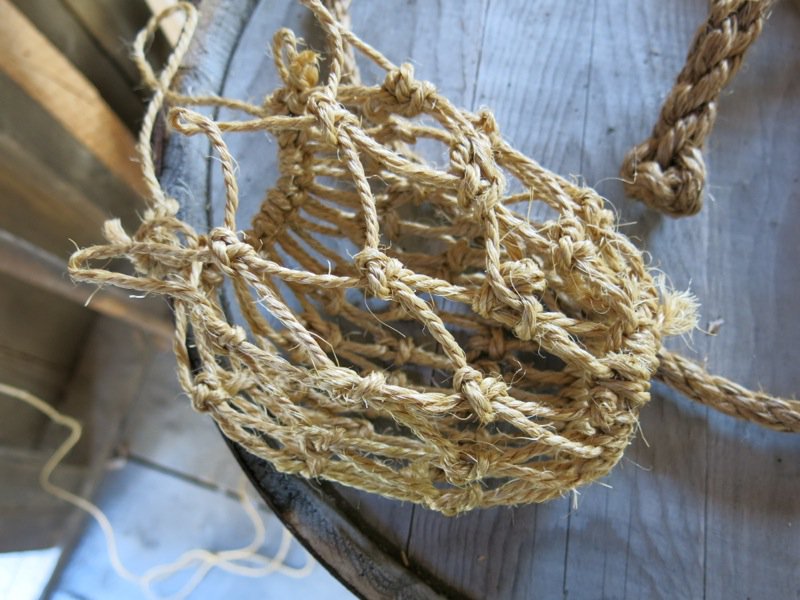
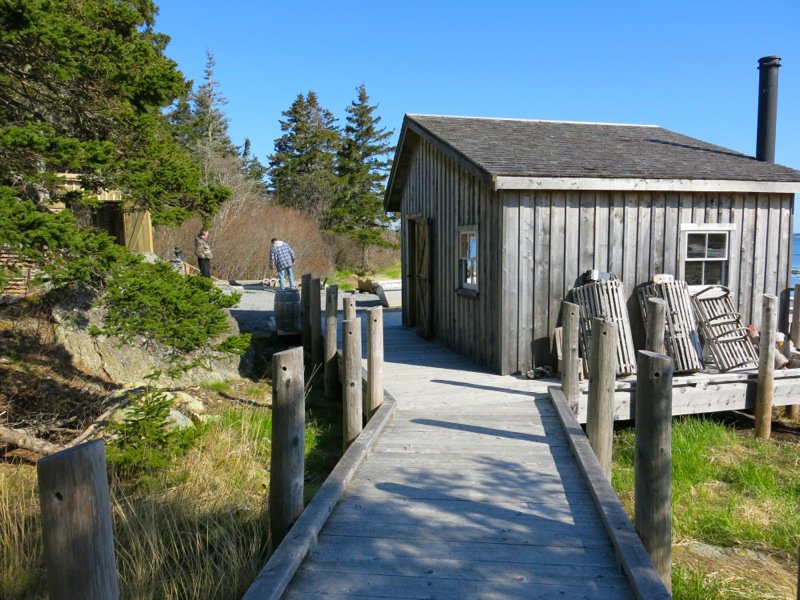
The wooden boardwalk took me back to my own childhood at my grandma’s village in Clive, Alberta. My sister and I would play by the railroad tracks on the swing set at the end of the wooden boardwalk in her village, for hours. This walk takes people to a wilderness area to learn about the ecosystem.
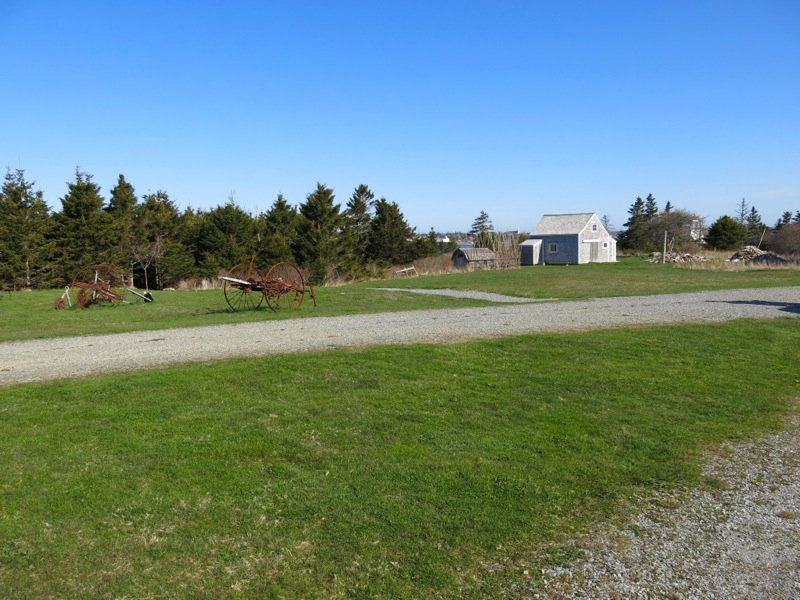
I can imagine the fields filled with children and families, horses, and animals, all busy with the work at hand in the day of old. Those times past are so intertwined with who we are now. Who we have become, and why. The people of Pubnico know who they are. They know from whence they came. They know their stories and their history. This is such a rarity within any community of Canada and I was overwhelmed with my personal discovery of this jewel of a town and its people: the keepers of the memories and the forgers of their future.
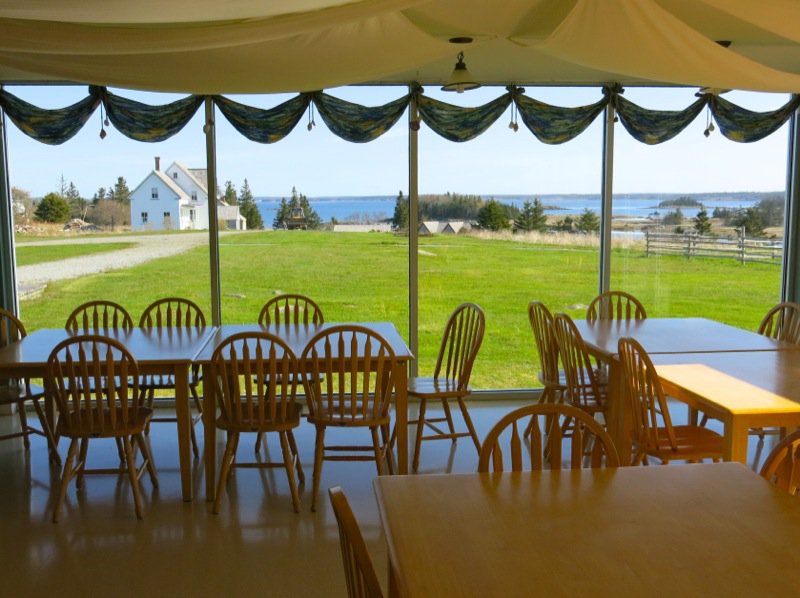
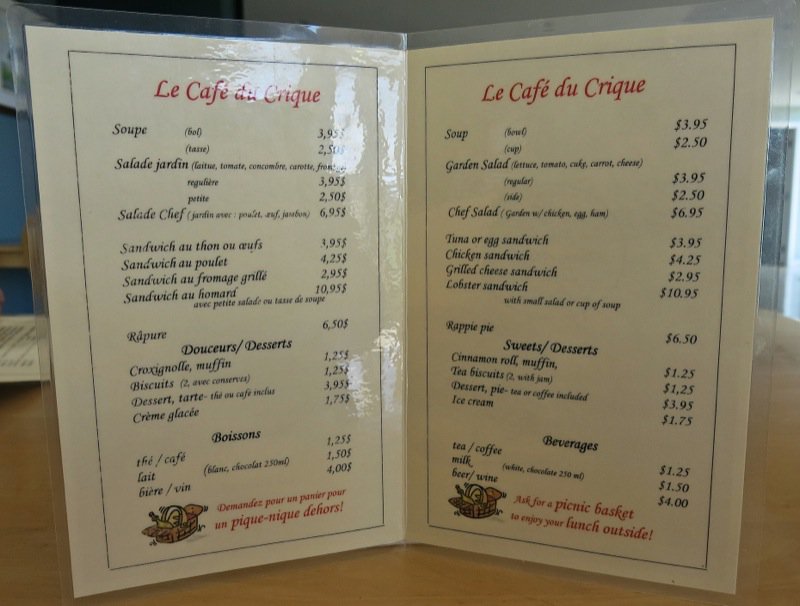
After a day in the sun, working at the tasks at hand, one must relax in the coolness of the restaurant on site with a lemonade, a slice of rappie pie, or a variety of other concoctions offered.
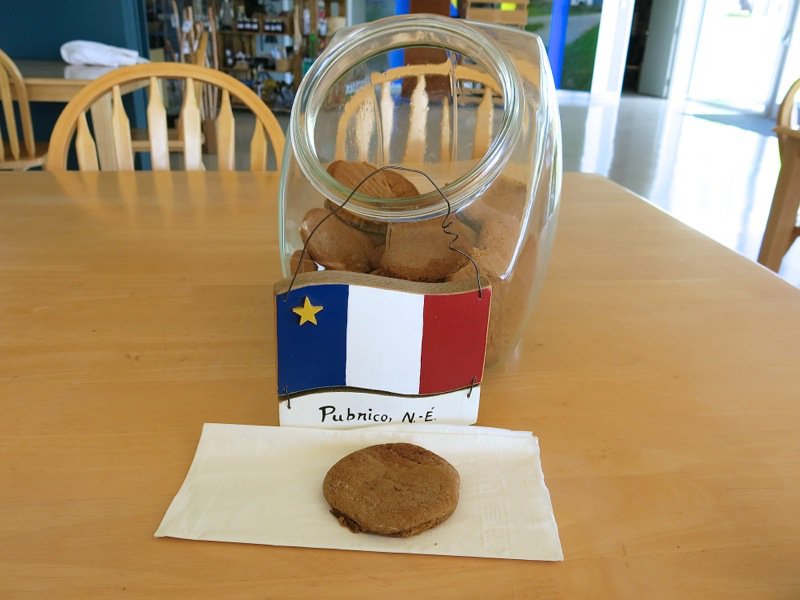
We didn’t have much time to visit with Roger, though he was a most gracious host. The cookie? Unforgettable.
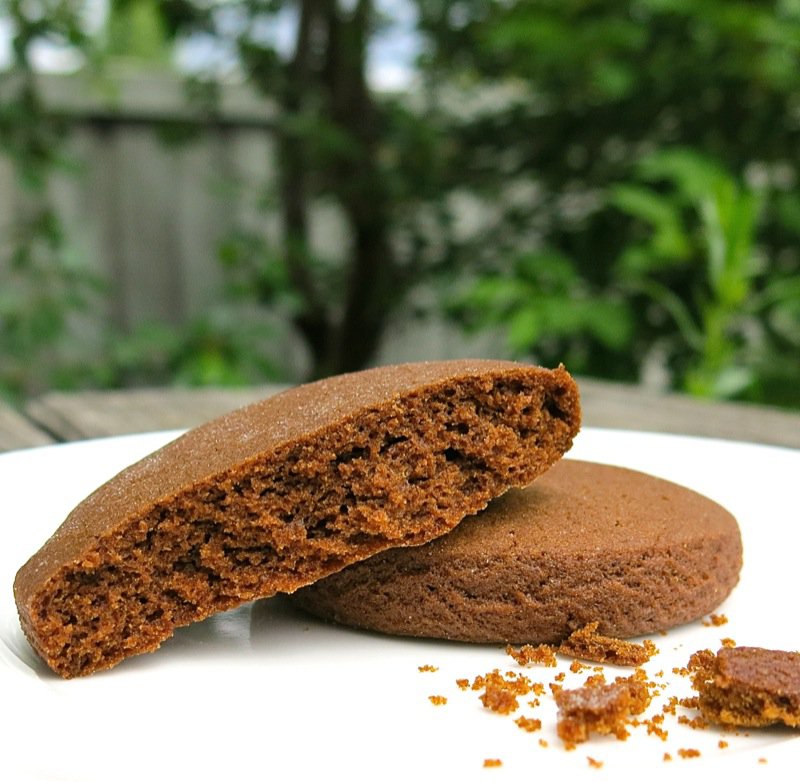
A taste of Pubnico that I have brought home to share with my family, here.
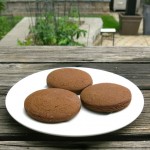
The Famous Pubnico Molasses Cookie
Ingredients
- 1 cup sugar
- 1 cup margarine (i put butter)
- 1 cup dark molasses
- 1 large egg
- 4 1/2 cups all purpose flour
- 2 teaspoons baking soda
- 1 teaspoon each of ginger , cloves, cinnamon and salt
- 1/2 cup milk
Instructions
-
Pre-heat oven to 350F
-
Cream sugar and butter
-
Add molasses and egg; blend well
-
Combine dry ingredients: add to the above, alternately with milk
-
Bring dough together; refrigerate tightly wrapped
-
Roll to 1/4 inch thick (this is quite thick; these cookies should not be thin)
-
Cut into shapes (They are round at Le Village Historique Acadien)
-
Bake at 350F for 10 minutes; serve warm or cold
-
Delicious with milk
Recipe Notes
Dough can be kept in the fridge, wrapped tightly, and cookies baked, as needed.

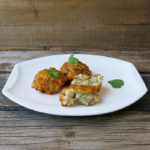



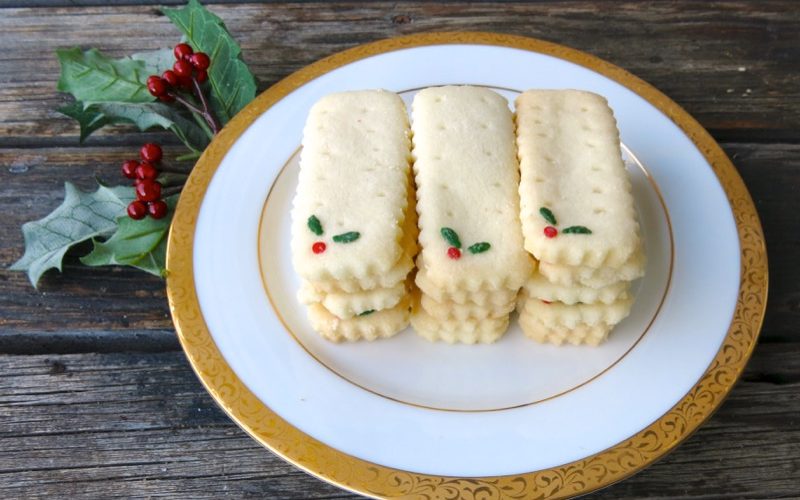



I love this style of molasses cookie. Not too sweet and a great crumb. Glad you enjoyed your visit to NS.
Oh, my!
That is an understatement, Bridget!
🙂
Valerie
fun! N’Oncle Réal and Tante Bernice are (as you can guess) my uncle and aunt! 🙂
I also had no idea that the molasses cookies I grew up eating were special- or more specifically that they were made differently elsewhere.
also- N’Oncle Réal is holding a swordfish “nose” 🙂 (grandpère on Tante Bernice’s side was a swordfish fisherman who went harpooning on big sailboats. There’s a black and white video with him in it somewhere. I believe this was before he went to war?)
That’s right! A swordfish nose! Hoped someone would remind me! And, your molasses cookies are very different than others. They are strong in molasses. They are not very sweet. They are soft. They have a beautiful crumb. This is why I dubbed them the Famous Pubnico Molasses Cookie as I have eaten a heck of a lot of molasses cookies, and this was the first one like this. Loved it!
🙂
Valerie
If you want to see what swordfishing was like was like when Real was young you can watch this video from the National Film Board.
https://www.youtube.com/watch?v=FUiT-7UYHj4
Real is one of the boys running down the hill at around the 5:30 mark.
Absolutely brilliant! Thank you for sharing! Am watching it now. I want to know which one he was!
🙂
Valerie
This is an incredible video! I have watched it about 10 times now.
🙂
Valerie
Thank you SO much for the link.
Can the cook book be bought at any other place?
Not that I am aware of, Christine, but you can order it from them.
🙂
Valerie
By the way, that recipe is on page 63. Page 65 has a slightly different recipe.
I’m wondering if the Edith d’Entremont you mention is the same one who’s also in the swordfishing video at 15:47?
Bernice’s father is one of the fishermen in that video too. He’s the guy on the phone at 23:31.
That is too amazing about Bernice’s father… this is a very very special video! The museum manager told me the recipe was on page 65. It is on page 65 of the book I have – and the first molasses cookie in that book…? Odd.
:)V
look YUMMY!
would love to buy the two older cookbooks i see in one of these pages i ve been looking at would this be possible and how much for each ,and would it be possible to pay by interac e mail……..please message me thank you ……..shirleyann
HI Shirleyann,
Contact the Pubnico Acadian Museum and talk to Bernice. She will hook you up with some cookbooks.
🙂
Valerie
My late mom Dorothee was born and raised in West Pubnico. She made these molasses cookies as well. I haven’t yet to get them the way she made them. I am indeed a proud Acadian and Love the Rappie Pie as well.
Dearest Francine Dobson,
I have learned so much from my Acadian brethern. It has been such an incredible Canadian experience for me. I spent so little time in the area, but learned so very much and am deeply touched by this part of our history, the people there – those that came before and the amazing geneology that is there. To know one’s ancestry like that is a gift.
🙂
Valerie
Thanks so much for this recipe. I first tried these in Quebec and did not know of their Acadian heritage until now. I have not had them for about a year but just finished the dough and it tastes perfect!!! I cannot wait to bake them and share them with family and friends. I think I’ll be getting a lot of requests after they try them!
Laura,
Thank you so very much for chiming in. I so appreciate it, and it builds confidence in my readers – and you are why I do what I do. Sharing Canadian food recipes to build family tradition and strengthen our cultural food heritage is so important.
Hugs,
Valerie
Thank you for the recipe. I did a google search for authentic Acadian molasses cookies and came across your web page.
My daughter and I did a tour of Nova Scotia the last 2 weeks of August and made sure we visited the Acadian Village. It was very well worth the visit. I was hoping to re-live the experience by making those cookies. So, thanks again.
Dear Celia!
So wonderful to hear from you and to “meet” you! Please do let me know how the cookies turned out. I still remember by afternoon sitting in the little cafe there, enjoying more than a few of those tasty cookies. The history in that area is incredible. Certainly, a Canadian jewel and I am so happy to hear you were able to see it with your daughter.
Hugs,
Valerie
oops! I meant to write the last 2 weeks of July
Every East Coast family had a recipe for Molasses Cookies….and yes, they were always soft! No final sprinkling of sugar before cooking – in part due to the fact that sugar was expensive originally, and most families wouldn’t think to indulge in such a way!
My Mom always made these when we were kids; her recipe came from her Grand Mother, and I’m not too sure I can *obtain* a copy of it now. Thanks for the memories!
Oh, you must try, KuklaCath!
If you get a copy of the recipe, would you share it with me?
These Canadian Heritage Recipes are so dear.
I would love to make your family recipe, too!
Thanks for the information. Such a treasured little peak into the window to Eastern Canada at that time.
🙂
Valerie
These cookies are what I have been looking for. My body doesn’t tolerate sugar well (not even coconut sugar or sucanat), so I substituted the milk for 1 c maple syrup and skipped the cup of sugar. Thankfully I can use spelt flour, which I used in these. And all local butter instead of margarine, as you did butter as well. Very good! Thank you.
Glad they cookies were tasty after all of the changes! Of course, I always use butter in baking! 🙂
Valerie
I’m not a foodie, but I sure remember my mother’s molasses cookies. I would love licking the bowl after she was done making them! I grew up about a mile from le Village Historique, and I am I am Nil à Benoit à Joseph à Ambroise à Joseph à Benoni à Jacques à Jacques à Philippe.
(Or, using nicknames : Nil à Ti-Benoit à Joe Botte à Boise à Joe Square à Benoni à Jacques à Jacques à Philippe.)
Great article – thanks for sharing and bringing this wonderful place (and its cookies) to a wider audience.
Wonderful hearing from you “Nil à Ti-Benoit à Joe Botte à Boise à Joe Square à Benoni à Jacques à Jacques à Philippe”!
Hugs,
Valerie
Hi. My best friend at school was Edith d’Entremont’s grandson and I have tasted her molasses
cookies right in her kitchen. We thought she was old then (sixty years ago) but she
went on to live to be 104 and passed away in the mid nineties.
Vince! What a great story and what an incredible experience. You all living in that area have an unbelieveable genealogical history – and great food history, too!
🙂
Valerie
My parents are from New Brunswick and are pretty fussy when it comes to molasses cookies. My father is from Shippegan and my mom from Rogersville. I made these for my Dad on his 81st Birthday and they were a huge hit with both my parents.
Thanks for sharing … I’ll be making them again.
I am tickled to hear this, Jackie!
Yeah!
Thank you for the vote of confidence you have now provided for the other readers of this recipe.
Hugs
Valerie
I really enjoyed your storiy and photos. I found this page searching for a molasses cookie recipe similar to my grandmother’s. She lived in Yarmouth, not far from Pubnico and her cookies did use fancy molasses, were thick and soft and she called them Fat Archies. They are very popular all over Southwestern Nova Scotia and go so well with hot cup of Red Rose tea or a cold glass of milk. Molasses is very common and used in a lot of recipes, especially baked beans and steamed brown bread. Growing up we would have bread, butter and molasses on the table at dinner. Now that I’ve read your article I am not only craving these cookies, but also some Rappie pie. An interesting fact that many don’t know is that Rappie pie is so popular in Soutwestern Nova Scotia that its served at the hospital and most of the nursing homes as a regular menu item. Its very popular and common for both French and English families. It’s also relatively unknown in other areas of Nova Scotia.
What a great bunch of information from you, C Grant! Thank you! I love to learn that Rappie pie is served in hospitals and nursing homes and that there is a traditional Canadian cookie called a FAT ARCHIE that has no history of where that name came from. What a fascinating food culture we have.
Big hug to you!
Valerie
Is it possible to make the cookies into different shapes beside a circle shape?
Im sure you can do whatever you want with the dough.
This is just the traditional recipe, Lav.
🙂
Valerie
I have the cookie dough in the fridge cooling. It does not seem to be as stiff as yours pictured but I’m hoping for the best. I did sift my flour first so maybe that wasn’t necessary. I have been looking for years for a molasses cookie recipe that is like my great-grandmother’s. Big, soft, wonderful cookies she kept in a green glass cookie jar in her pantry. Great-grandma’s kitchen always smelled of yummy molasses cookies. I’m keeping my fingers crossed for this to BE the recipe I have been looking for. I don’t believe she had Acadian heritage as my Ancestors were Scottish.
Hi Patricia!
And….. was it THE recipe you were looking for?
Inquiring minds are waiting to hear!
Happy 2024!
Valerie
Can you freeze these cookies?
Hi Donna,
There’s rarely a cookie one cannot freeze. Sure can!
🙂
Valerie